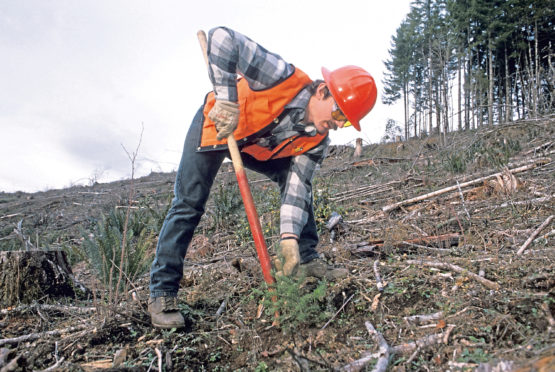Farmers are being offered help to improve tree planting schemes to make them more effective at capturing airborne ammonia and reducing air pollution.
Developed as part of a research programme funded by the Scottish Environment Protection Agency (SEPA), the new ammonia capture package includes advice on which tree species will thrive in different parts of the UK, what distance to plant trees from animal housing and in what configuration.
An online calculator, meanwhile, is designed to give farmers an estimate of the percentage of ammonia that they will be able to recapture. Estimated capture benefits are calculated for long-term plantings of up to 50 years.
“Trees are particularly effective scavengers of air pollutants like ammonia,” said Dr Bill Bealey, an ecologist at the NERC Centre for Ecology and Hydrology, which led the research programme.
“Trees recapture the pollutant in the canopy and on to the leaves and also help disperse the ammonia plume, reducing the impact of nitrogen pollution on nearby sensitive habitats.
“New canopies can improve animal welfare by providing them with shade and protection from aerial predators. They can also provide screening around animal housing units, to soften the look of buildings and minimise visibility impacts on the landscape.”
Dr Elena Vanguelova, a soil sustainability expert for Forest Research, the other half of the research team, said the capture of carbon and nitrogen has a role to play in helping the UK achieve its greenhouse gas emission targets.
She said: “Our calculator and guidance provide farmers and landowners with the information they need to use nature’s best nitrogen ‘mops’ to mitigate the ammonia produced by animal housing units while protecting soils, waters and the wider environment.”
Andrew Midgley, environment and land use policy manager at NFU Scotland, added: “Food production unavoidably involves emissions to the atmosphere and any tool that can help farmers to limit the impact of those emissions is a positive development. The degree to which the tool will be usable in each location will vary due to issues such as the ownership of adjacent land, but farmers recognise the importance of this issue and we would urge SEPA to work constructively with the industry, tailoring advice to individual farms and offering targeted financial support if required.”
